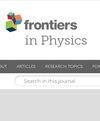Global particle buildup simulations with gas puff scan: application to WEST discharge
IF 1.9
3区 物理与天体物理
Q2 PHYSICS, MULTIDISCIPLINARY
引用次数: 0
Abstract
This paper deals with the distribution of sources, transport, and exhaust of particles in a tokamak. Knowledge and understanding of all the physical phenomena involved in the global particle buildup are necessary to study and predict density regimes and subsequently to develop optimized scenarios for tokamak operation in order to control heat and particle exhaust. Neutral particles and their interactions with plasma are central in this perspective. This paper discusses the impact of varying the intensity of particle fueling in 2D transport simulations of a WEST discharge. Simulations are performed with an updated version of SOLEDGE-HDG that allows a more realistic transport of neutrals using a self-consistent diffusive model based on charge exchange and ionization processes. New code capabilities allow the entire WEST poloidal cross section to be simulated in a realistic configuration for both geometry and the range of control parameters. A gas puff scan illustrates the main features of the sheath-limited, high-recycling, and detached regimes, such as the buildup of the temperature gradient and the pressure drop in the scrape-off layer (SOL), the target temperature falling to 1 eV, and the ionization source moving away from the targets, as well as the particle flux rollover. A crude estimate of wall erosion is also provided, showing the respective role of each plasma wall component in each of these regimes.利用气泡扫描进行全球粒子堆积模拟:应用于 WEST 放电
本文涉及托卡马克中粒子的来源、传输和排气的分布。要研究和预测密度状态,并随后制定托卡马克运行的优化方案,以控制热量和粒子废气,就必须了解和理解全球粒子聚集所涉及的所有物理现象。中性粒子及其与等离子体的相互作用是这一观点的核心。本文讨论了在 WEST 放电的二维传输模拟中改变粒子燃料强度的影响。模拟是使用 SOLEDGE-HDG 的更新版本进行的,该版本允许使用基于电荷交换和电离过程的自洽扩散模型对中性粒子进行更真实的传输。新的代码功能允许以逼真的配置模拟整个 WEST 极性截面的几何形状和控制参数范围。气体脉冲扫描说明了鞘限制、高循环和分离状态的主要特征,如温度梯度的积累和刮除层(SOL)的压力下降、目标温度下降到 1 eV、电离源远离目标以及粒子通量翻转。此外,还提供了对壁面侵蚀的粗略估计,显示了等离子体壁各组成部分在上述每种情况下各自发挥的作用。
本文章由计算机程序翻译,如有差异,请以英文原文为准。
求助全文
约1分钟内获得全文
求助全文
来源期刊

Frontiers in Physics
Mathematics-Mathematical Physics
CiteScore
4.50
自引率
6.50%
发文量
1215
审稿时长
12 weeks
期刊介绍:
Frontiers in Physics publishes rigorously peer-reviewed research across the entire field, from experimental, to computational and theoretical physics. This multidisciplinary open-access journal is at the forefront of disseminating and communicating scientific knowledge and impactful discoveries to researchers, academics, engineers and the public worldwide.
 求助内容:
求助内容: 应助结果提醒方式:
应助结果提醒方式:


